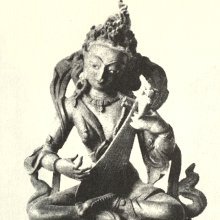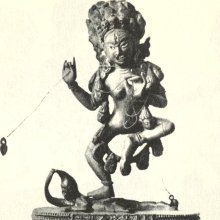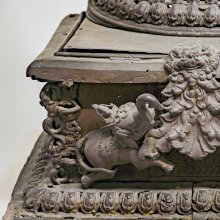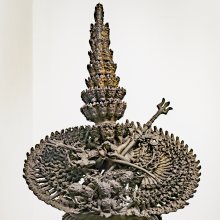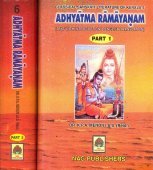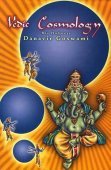Gita, Gīta, Gītā: 32 definitions
Introduction:
Gita means something in Buddhism, Pali, Hinduism, Sanskrit, Marathi, Hindi. If you want to know the exact meaning, history, etymology or English translation of this term then check out the descriptions on this page. Add your comment or reference to a book if you want to contribute to this summary article.
Alternative spellings of this word include Geet.
Images (photo gallery)
(+6 more images available)
In Hinduism
Natyashastra (theatrics and dramaturgy)
Source: Wisdom Library: Nāṭya-śāstraGīta (गीत) refers to “song”. According to the Nāṭyaśāstra 1.17-18, when Brahmā created the Nāṭyaveda he took gīta (song) from the Sāmaveda. The term is used throughout nāṭyaśāstra literature.
Source: Google Books: Music TherapyGīta (गीत, “song”) is derived from gīr or gīrṇi (swallowing).—When we swallow food and when we sing and utter the word, we control or obstruct our breath. Therefore, singing was called gīr (as in gīrbāṇi or ghīrvāṇi) in the Veda and from it is derived the word gīta or song.

Natyashastra (नाट्यशास्त्र, nāṭyaśāstra) refers to both the ancient Indian tradition (shastra) of performing arts, (natya—theatrics, drama, dance, music), as well as the name of a Sanskrit work dealing with these subjects. It also teaches the rules for composing Dramatic plays (nataka), construction and performance of Theater, and Poetic works (kavya).
Purana and Itihasa (epic history)
Source: archive.org: Puranic EncyclopediaGītā (गीता).—See under Bhagavad Gītā.
Source: Cologne Digital Sanskrit Dictionaries: The Purana IndexGīta (गीत).—Of apsaras and Gandharvas;1 in connection with worship of trees and in founding new shrines.2 Kinnaras famous for;3 five deities of.4
- 1) Matsya-purāṇa 7. 14; 61. 23; 82. 29; 105. 6; 120. 31.
- 2) Ib. 232. 15; 265. 7 and 51.
- 3) Vāyu-purāṇa 54. 6; 69. 37.
- 4) Ib. 87. 30.

The Purana (पुराण, purāṇas) refers to Sanskrit literature preserving ancient India’s vast cultural history, including historical legends, religious ceremonies, various arts and sciences. The eighteen mahapuranas total over 400,000 shlokas (metrical couplets) and date to at least several centuries BCE.
Shaivism (Shaiva philosophy)
Source: Shodhganga: Iconographical representations of ŚivaGīta (गीत) or Gītāgama refers to one of upāgamas (supplementary scriptures) of the Prodgītāgama which is one of the twenty-eight Siddhāntāgama: a classification of the Śaiva division of Śaivāgamas. The Śaivāgamas represent the wisdom that has come down from lord Śiva, received by Pārvatī and accepted by Viṣṇu. The purpose of revealing upāgamas (e.g., Gīta Āgama) is to explain more elaborately than that of mūlāgamas (e.g., Prodgīta-āgama) and to include any new idea if not dealt in mūlāgamas.
Source: Shodhganga: Temple management in the ĀgamasGīta (गीत) refers to “classical singing” (specific rāga during certain rituals) and represents one of the various upacāras (offerings), in pūjā (ritual worship), as defined in the Śaivāgamas.—Pūjā consists of offering hospitality, in the form of water to wash the feet, to drink, water for ablutions, offering a bath, new clothes, fragrant unguents, fragrant flowers and ornaments, food and so on. Each step in the pūjā process is called “saṃskāra” and each offering is called “upacāra” [viz., Gīta].
Source: Brill: Śaivism and the Tantric TraditionsGīta (गीत) refers to “songs” (in a pub), according to the Mattavilāsaprahasana.—Accordingly, as the Kāpālika cries out: “My darling, look. This pub resembles the Vedic sacrificial ground. For its signpost resembles the sacrificial pillar; in this case alcohol is the Soma, drunkards are the sacrificial priests, the wine glasses are the special cups for drinking Soma, the roasted meat and other appetizers are the fire oblations, the drunken babblings are the sacrificial formulae, the songs (gīta) are the Sāman-hymns (sāman), the pitchers are the sacrificial ladles, thirst is the fire and the owner of the pub is the patron of the sacrifice”

Shaiva (शैव, śaiva) or Shaivism (śaivism) represents a tradition of Hinduism worshiping Shiva as the supreme being. Closely related to Shaktism, Shaiva literature includes a range of scriptures, including Tantras, while the root of this tradition may be traced back to the ancient Vedas.
Vaishnavism (Vaishava dharma)
Source: Pure Bhakti: Bhagavad-gita (4th edition)Gītā (गीता) refers to “literally, ‘song’. Śrīmad Bhagavad-gītā”. (cf. Glossary page from Śrīmad-Bhagavad-Gītā).

Vaishnava (वैष्णव, vaiṣṇava) or vaishnavism (vaiṣṇavism) represents a tradition of Hinduism worshipping Vishnu as the supreme Lord. Similar to the Shaktism and Shaivism traditions, Vaishnavism also developed as an individual movement, famous for its exposition of the dashavatara (‘ten avatars of Vishnu’).
Kama-shastra (the science of Love-making)
Source: Shodhganga: Elements of Art and Architecture in the Trtiyakhanda of the Visnudharmottarapurana (kama)Gīta (गीत) or “vocal music” refers to one of the “sixty four kinds of Art”, according to the Kāmasūtra of Vātsyāyaṇa.—Indian tradition, basically includes sixty four Art forms are acknowledged. The references of sixty four kinds of kalā are found in the Bhāgavatapurāṇa, Śaiva-Tantras, Kāmasūtra of Vātsyāyaṇa etc.
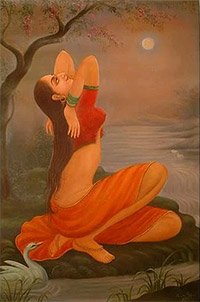
Kamashastra (कामशास्त्र, kāmaśāstra) deals with ancient Indian science of love-making, passion, emotions and other related topics dealing with the pleasures of the senses.
Sports, Arts and Entertainment (wordly enjoyments)
Source: archive.org: Syainika Sastra of Rudradeva with English Translation (art)Gītā (गीता) refers to “vocal music”, and represents one of the eighteen Addictions or Vices (vyasana) which are to be practised within proper bounds for the delight of the enjoyments of the world, according to the Śyainika-śāstra: a Sanskrit treatise dealing with the divisions and benefits of Hunting and Hawking, written by Rājā Rudradeva (or Candradeva) in possibly the 13th century.—Accordingly, “[...] It has been said that there are eighteen addictions. These are the outcome of the desire for earthly enjovments. [...] Vocal music (gītā) consists of songs by charming voices sung with time and tune in harmony accompanied by dances. Experts only appreciate it. Sung on proper occasions it leads to the attainment of the four objects of life. It is patent to all how it leads to the attainment of wealth and desires. [...]”.

This section covers the skills and profiencies of the Kalas (“performing arts”) and Shastras (“sciences”) involving ancient Indian traditions of sports, games, arts, entertainment, love-making and other means of wordly enjoyments. Traditionally these topics were dealt with in Sanskrit treatises explaing the philosophy and the justification of enjoying the pleasures of the senses.
General definition (in Hinduism)
Source: WikiPedia: HinduismGītā (गीता): See Bhagwad Gita
In Buddhism
Mahayana (major branch of Buddhism)
Source: Wisdom Library: Maha Prajnaparamita Sastra1) Gītā (गीता) refers to “knowledge of chants”, having its roots in the four Vedas, according Mahāprajñāpāramitāśāstra (chapter 4). Accordingly, at the time of the Buddha, the knowledge of chants (gītā) was commonly exchanged between Brahmins and cow-herders.
2) Gītā (गीता) refers to “singing”, representing one of the various actions of Māra, according to Mahāprajñāpāramitāśāstra (chapter 10).—Accordingly, “[Question: What are the works of Māra?]—[Answer].—[...] Māra has three types of actions: (a) play, laughter, idle chatter, singing (gītā), dancing, and everything that provokes desire; (b) iron fetters, beating, whipping, wounds, spikes, knives, slashing and everything that is caused by hatred; (c) [demented mortifications] such as being burned, being frozen, tearing out one’s hair, starving, jumping into the fire, throwing oneself into the water, falling onto spears and everything that results from stupidity”.

Mahayana (महायान, mahāyāna) is a major branch of Buddhism focusing on the path of a Bodhisattva (spiritual aspirants/ enlightened beings). Extant literature is vast and primarely composed in the Sanskrit language. There are many sūtras of which some of the earliest are the various Prajñāpāramitā sūtras.
Tibetan Buddhism (Vajrayana or tantric Buddhism)
Source: Google Books: An Illustrated History of the MandalaGītā (गीता) is the deity associated with Tṛṣṇā (“craving”): one of the Seventeen Viśuddhipadas (“stations of purity”), according to the Prajñāpāramitānayasūtra: an ancient Buddhist Tantric text recited daily in the Japanese Shingon sect which is closely related to the Sarvatathāgatatattvasaṃgraha.—The seventeen-deity maṇḍala, representing the deification of the seventeen viśuddhipadas, corresponds to the great maṇḍala described in the Mahāsamayatattvavajra, which explains seventeen viśuddhipadas (twenty in the Chinese translation). [...] Iconographically, these Goddesses (e.g., Gītā) correspond to the four inner offering goddesses of the Vajradhātu-maṇḍala. [...]
Source: archive.org: The Indian Buddhist IconographyGītā (गीता) refers one of four dance-deities, commonly depicted in Buddhist Iconography, and mentioned in the 11th-century Niṣpannayogāvalī of Mahāpaṇḍita Abhayākara.—Her Colour is reddish-white; her Symbol is the Indian gong; she has two arms.—All these four deities (viz., Gītā) are popular in the Vajrayāna pantheon and are described times without number both in the Sādhanamālā as well as in the Niṣpannayogāvalī.
Gītā is described in the Niṣpannayogāvalī (pañcaḍāka-maṇḍala) as follows:—
Source: academia.edu: The Structure and Meanings of the Heruka Maṇḍala“Gītā is reddish white in colour, and with her two hands she is engaged in playing on the Indian gong (kaṃsī)”.
[All these dance-deities are violent in character with garland of severed heads, and dance in pratyālīḍha. They show the tarjanī against the chest as the common gesture.]
Gītā (गीता) is the name of a Ḍākinī who, together with the Vīra (hero) named Gīta forms one of the 36 pairs situated in the Ākāśacakra, according to the 10th century Ḍākārṇava chapter 15. Accordingly, the ākāśacakra refers to one of the three divisions of the dharma-puṭa (‘dharma layer’), situated in the Herukamaṇḍala. The 36 pairs of Ḍākinīs [viz., Gītā] and Vīras are dark blue in color; they each have one face and four arms; they hold a skull bowl, a skull staff, a small drum, and a knife. Alternatively, the Ḍākinīs have their own marks and motions according to the taste instead of a small drum and a skull staff.
Source: OSU Press: Cakrasamvara SamadhiGītā (गीता) refers to the “(vajra) song” [i.e., oṃ vajragīte hrīṃ], according to the Guru Mandala Worship (maṇḍalārcana) ritual often performed in combination with the Cakrasaṃvara Samādhi, which refers to the primary pūjā and sādhanā practice of Newah Mahāyāna-Vajrayāna Buddhists in Nepal.

Tibetan Buddhism includes schools such as Nyingma, Kadampa, Kagyu and Gelug. Their primary canon of literature is divided in two broad categories: The Kangyur, which consists of Buddha’s words, and the Tengyur, which includes commentaries from various sources. Esotericism and tantra techniques (vajrayāna) are collected indepently.
Languages of India and abroad
Pali-English dictionary
Source: BuddhaSasana: Concise Pali-English Dictionarygīta : (nt.) a song; singing. (pp. of gāyati), sung; recited.
Source: Sutta: The Pali Text Society's Pali-English DictionaryGīta, (pp. of gāyati) 1. (pp.) sung, recited, solemnly proclaimed, enunciated: mantapadaṃ gītaṃ pavuttaṃ D.I, 104 (cp. gira).—2. (nt.) singing, a song; grouped under vācasikā khiḍḍā, musical pastimes at Nd2 219; SnA 86. Usually combined with nacca, dancing: A.I, 261; Vv8110 as naca gītādi J.I, 61; VvA.131; referring to nacca-gīta-vādita, dancing with singing & instrumental accompaniment D.III, 183 (under samajja, kinds of festivities); Vv 324. Same with visūkadassana, pantomimic show at D.I, 5≈(cp. DA.I, 77; KhA 36).

Pali is the language of the Tipiṭaka, which is the sacred canon of Theravāda Buddhism and contains much of the Buddha’s speech. Closeley related to Sanskrit, both languages are used interchangeably between religions.
Marathi-English dictionary
Source: DDSA: The Molesworth Marathi and English Dictionarygīta (गीत).—n (S) Song or singing: also a song. v gā, hmaṇa. Ex. agē majakaritāṃ ēka gīta hmaṇa ||. Also hmaṇuni sakala gōpī gōpati gīta gāyā ||. 2 m A measure of verse to be chanted. gīta gāṇēṃ To be ever harping upon one strain or piping one note.
--- OR ---
gīta (गीत).—p S Sung.
--- OR ---
gītā (गीता).—f (S) A name applied to sacred poems, as bhagavadgītā, śivagītā, nāradagītā, and, par excellence, to bhagavadgītā.
Source: DDSA: The Aryabhusan school dictionary, Marathi-Englishgīta (गीत).—n Song; a song. p Sung.
--- OR ---
gītā (गीता).—f A name applied to sacred poems, as bhagavagdītā, śivagītā, nāradagītā, and, par excellence, to bhagavagdītā.
Marathi is an Indo-European language having over 70 million native speakers people in (predominantly) Maharashtra India. Marathi, like many other Indo-Aryan languages, evolved from early forms of Prakrit, which itself is a subset of Sanskrit, one of the most ancient languages of the world.
Sanskrit dictionary
Source: DDSA: The practical Sanskrit-English dictionaryGīta (गीत).—p. p. [gai-kta]
1) Sung, chanted (lit.); आर्ये साधु गीतम् (ārye sādhu gītam) Ś.1; चारणद्वन्द्वगीतः शब्दः (cāraṇadvandvagītaḥ śabdaḥ) Ś.2.15.
2) Declared, told, said; गीतश्चायमर्थोऽङ्गिरसा (gītaścāyamartho'ṅgirasā) Mālatīmādhava (Bombay) 2; (see under gai also).
-tam Singing, a song; तवास्मि गीतरागेण हारिणा प्रसभं हृतः (tavāsmi gītarāgeṇa hāriṇā prasabhaṃ hṛtaḥ) Ś.1.5; गीतमुत्सादकारि मृगाणाम् (gītamutsādakāri mṛgāṇām) K.32.
--- OR ---
Gītā (गीता).—[gai karmaṇi kta] A name given to certain sacred writings in verse (often in the form of a dialogue) which are devoted to the exposition of particular religious and theosophical doctrines; e. g. शिवगीता, रामगीता, भगवद्गीता (śivagītā, rāmagītā, bhagavadgītā). But the name appears to be especially confined to the last, the Bhagavadgītā; गीतासुगीता कर्तव्या किमन्यैः शास्त्रविस्तरैः । या स्वयं पद्मनाभस्य मुखपद्माद्विनिःसृता (gītāsugītā kartavyā kimanyaiḥ śāstravistaraiḥ | yā svayaṃ padmanābhasya mukhapadmādviniḥsṛtā) || quoted by Śrīdharasvāmin.
Source: Cologne Digital Sanskrit Dictionaries: Edgerton Buddhist Hybrid Sanskrit DictionaryGītā (गीता).—Song, personified as one of eight deities or (324.6) yoginīs: Sādhanamālā 157.12 and 324.6 Lāsyā-Mālyā (324.6 Mālā)-Gītā-Nṛtyā-Puṣpā-Dhūpā-Dīpā-Gandhāś ca (324.6 °Gandhādy-aṣṭayoginībhir…); et alibi.
Source: Cologne Digital Sanskrit Dictionaries: Shabda-Sagara Sanskrit-English DictionaryGīta (गीत).—mfn.
(-taḥ-tā-taṃ) Sung, chaunted, sounded, &c. f.
(-tā) A name often applied to books, as the Siva Gita, Rama Gita, Gita Govinda, Bhagavad Gita, which last is also often called Gita only. n.
(-taṃ) Singing, song either general or particular. E. gṝ to sing, affix kta.
Source: Cologne Digital Sanskrit Dictionaries: Cappeller Sanskrit-English DictionaryGīta (गीत).—[adjective] sung, praised, proclaimed, named, called; [neuter] song, verse. [feminine] ā sacred song or poem.
Source: Cologne Digital Sanskrit Dictionaries: Aufrecht Catalogus Catalogorum1) Gīta (गीत) as mentioned in Aufrecht’s Catalogus Catalogorum:—praise of Kṛṣṇa, by Viṭṭhaladīkṣita. Hall. p. 151.
2) Gītā (गीता):—See Bhagavadgītā.
Source: Cologne Digital Sanskrit Dictionaries: Monier-Williams Sanskrit-English Dictionary1) Gīta (गीत):—mfn. (√gai) sung, chanted, praised in songs, [Manu-smṛti ix, 42; Mahābhārata] etc.
2) n. singing, song, [Vājasaneyi-saṃhitā xxx; Taittirīya-brāhmaṇa iii; Śatapatha-brāhmaṇa iii, vi; Āpastamba-dharma-sūtra] etc.
3) Name of four hymns addressed to Kṛṣṇa
4) Gītā (गीता):—[from gīta] f. a song, sacred song or poem, religious doctrines declared in metrical form by an inspired sage (cf. Agastya-gītá, Bhagavad-gītá [often called Gītā, [Prabodha-candrodaya vi, 9/10 etc.]], Rāma-gītá, Śiva-gītá)
5) [v.s. ...] Name of a metre.
Source: Cologne Digital Sanskrit Dictionaries: Yates Sanskrit-English DictionaryGīta (गीत):—(taṃ) 1. n. Singing, song. f. (tā) Name of a poem. a. Sung.
Source: DDSA: Paia-sadda-mahannavo; a comprehensive Prakrit Hindi dictionary (S)Gīta (गीत) in the Sanskrit language is related to the Prakrit words: Gāia, Gīā, Gīya.
[Sanskrit to German]
Sanskrit, also spelled संस्कृतम् (saṃskṛtam), is an ancient language of India commonly seen as the grandmother of the Indo-European language family (even English!). Closely allied with Prakrit and Pali, Sanskrit is more exhaustive in both grammar and terms and has the most extensive collection of literature in the world, greatly surpassing its sister-languages Greek and Latin.
Hindi dictionary
Source: DDSA: A practical Hindi-English dictionary1) Gīta (गीत) [Also spelled geet]:—(nm) a song, a lyrical poem; ~[kāvya] lyrical poetry; —[gānā] to sing a song; to shower praises upon, to eulogize.
2) Gītā (गीता):—(nf) the Bhagwadgita: which contains the celebrated discourse of Lord Krishna directed to Arjun, the stupefied hero of the Mahabharat.
...
Kannada-English dictionary
Source: Alar: Kannada-English corpusGīta (ಗೀತ):—[adjective] sung (with a musical voice, in a connected series, as a song).
--- OR ---
Gīta (ಗೀತ):—
1) [noun] the act or art of singing.
2) [noun] a composition for or suitable for, singing; a song.
3) [noun] any of various civet-like carnivores of Viverridae family esp., noted for their ability to kill poisonous snakes, rodents, etc.; a mongoose.
4) [noun] the apparent blue canopy over our heads; the sky.
5) [noun] any of the six divisions of a year (a period of two months).
Kannada is a Dravidian language (as opposed to the Indo-European language family) mainly spoken in the southwestern region of India.
See also (Relevant definitions)
Starts with (+63): Gita Sutta, Gitabandhana, Gitabhushana, Gitacarya, Gitadigambara, Gitagangadhara, Gitagauri, Gitagauripati, Gitagaurisha, Gitaghosha, Gitagiri, Gitagirisha, Gitagita, Gitagoshthi, Gitagovinda, Gitaguna, Gitagunjana, Gitajna, Gitaka, Gitakadi.
Ends with (+372): Abhigita, Abhinandanasvamigita, Abhiyogita, Abhogita, Adbhutagita, Adhvanasamgita, Adhyatmagita, Adisaragita, Advaitagita, Agastyagita, Aggita, Agita, Ahvana-gita, Ailagita, Ajitanathagita, Akhyanaka-gita, Alaggita, Alagita, Alingita, Amargita.
Full-text (+1892): Gitamodin, Devi, Gurugita, Gopi, Ganesha, Bhagavad-gita, Uddhava, Vidyagita, Mankigita, Ashtavakra Gita, Brahmagita, Gitapustaka, Ashtavakra, Nigita, Komalagita, Gaia, Pitrigitakathana, Pragita, Guru, Utathya.
Relevant text
Search found 174 books and stories containing Gita, Gīta, Gītā; (plurals include: Gitas, Gītas, Gītās). You can also click to the full overview containing English textual excerpts. Below are direct links for the most relevant articles:
Samkhya thoughts in the Mahabharata (by Shini M.V.)
Piṅgala-gītā (summary) < [Chapter 3 - The Philosophical Tenets in the Śānti-parva]
Resume < [Chapter 3 - The Philosophical Tenets in the Śānti-parva]
Parāśara-gītā (Summary) < [Chapter 3 - The Philosophical Tenets in the Śānti-parva]
Shiva Gita (study and summary) (by K. V. Anantharaman)
Appendix 1 - The Pre-eminence of Śiva Gītā over Other Gītās
Chapter 1 - Pre-eminence of Śiva devotion (śivabhakti-utkarṣa-nirūpaṇa)
Vishnudharmottara Purana (Art and Architecture) (by Bhagyashree Sarma)
1. A Note on Music < [Chapter 2 - Music]
3. A General Note on Art < [Chapter 1 - Introduction]
2. Origin and Development of Indian Music < [Chapter 2 - Music]
Sahitya-kaumudi by Baladeva Vidyabhushana (by Gaurapada Dāsa)
Text 7.81 < [Chapter 7 - Literary Faults]
Text 10.216 < [Chapter 10 - Ornaments of Meaning]
Text 4.8 < [Chapter 4 - First-rate Poetry]
Gitartha Samgraha (critical Study) (by Partha Sarathi Sil)
3. The Tradition of Commentaries on Bhagavadgītā in Kashmir < [Chapter 1 - A Brief Sketch of the Bhagavadgītā]
2. Time of composition of the Bhagavadgītā < [Chapter 1 - A Brief Sketch of the Bhagavadgītā]
1. The Bhagavadgītā and its commentaries < [Chapter 1 - A Brief Sketch of the Bhagavadgītā]
Trishashti Shalaka Purusha Caritra (by Helen M. Johnson)
Part 2: Incarnation as Suvidhi (introduction) < [Chapter VII - Suvidhināthacaritra]
Related products
(+4 more products available)

